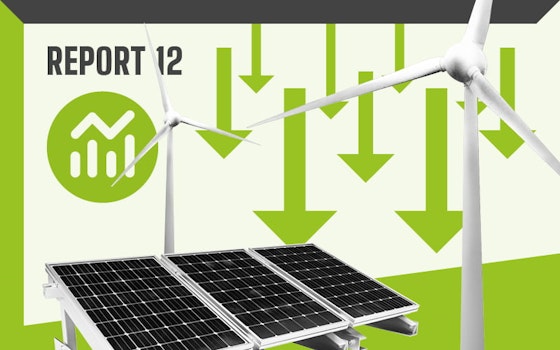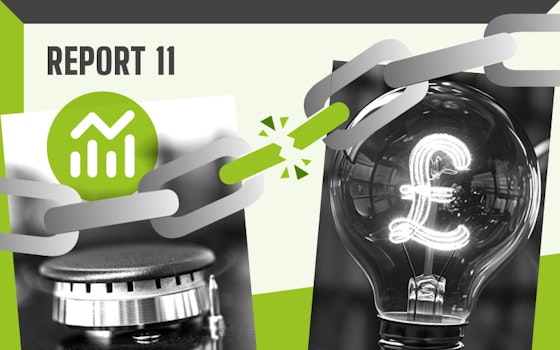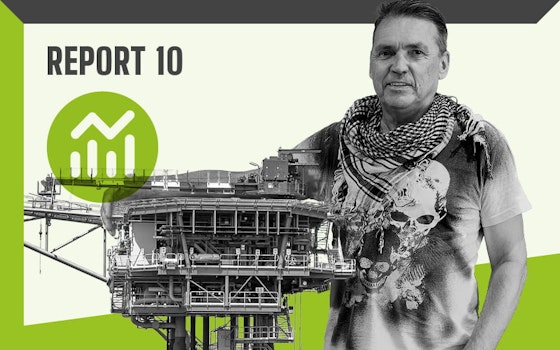
Breaking the Link: The Macroeconomic Case for Fixing Britain’s Energy Market
How lower electricity prices could boost growth, cut inflation and leave every Brit better off
Report releasedDecember 11, 2025
View ReportSee the full report on the Green Britain Foundation website
Our Green Gas Report examines an alternative, home-grown solution to decarbonising the UK’s heating sector and reducing reliance on fossil fuels. Commissioned by us at Ecotricity, the report is split into two core parts. Part One focuses on the concept of ‘Green Gas’ (biomethane made via grass-fed anaerobic digestion), describing how it can meet much of Britain’s gas needs using existing agricultural land and infrastructure. Part Two explores the implications of a large-scale switch to domestic heat pumps, contrasting that approach with a strategy based on nationwide Green Gas production. Taken together, the findings highlight how biomethane could play a vital role in Britain’s journey to net zero—potentially delivering economic benefits, energy security, and substantial cuts in greenhouse gas emissions.
The document is divided into two main sections:
Green Gas – The Opportunity for Britain
Domestic Heat Pumps in the UK – The Implications of a Wholesale Switch
Green Gas is produced by feeding grass (specifically multi-species herbal leys) into anaerobic digesters that generate biogas. This biogas is purified into biomethane, which can be injected into the existing gas grid. Grass-based biomethane is effectively carbon-neutral because it recycles carbon that is already in circulation, rather than releasing new fossil carbon. The report emphasises that converting grass to biomethane utilises proven technology—no radical changes to home boilers or significant new infrastructure are needed.
Sufficient Grassland: An estimated 6.46 million hectares of UK grassland are considered suitable for growing the herbal mixes needed. This excludes land used for food crops and sensitive habitats.
Meeting Gas Demand: If developed at scale, Green Gas could displace between 30% and nearly 60% of the UK’s entire current gas usage—enough to heat millions of homes. Factoring in dietary shifts or adding seaweed to boost methane yields expands this capacity even further.
Existing Infrastructure: Because biomethane is chemically similar to fossil-derived natural gas, it can flow through the nation’s gas pipes without extensive upgrades. This “drop-in” capability positions Green Gas as an immediate and convenient replacement for fossil gas.
Boosting Rural Economies: Each “Green Gas Mill” (a 5MW facility) could support around 30 direct jobs in farming, logistics, and plant operations, injecting around £3 million per year into local agricultural economies through feedstock contracts.
Carbon Savings: Compared to extracting and burning fossil gas, replacing each unit of natural gas with Green Gas can reduce emissions by up to 87% now, and as much as 99% by 2050 with improvements in technology and reduced methane slip during production.
Wildlife and Soil Health: Herbal leys enrich biodiversity by providing nectar and habitat for pollinators. Deep-rooted herbal species also improve soil structure, reduce erosion, and cut down fertiliser needs. The digestate by-product becomes a natural biofertiliser, reducing synthetic fertiliser use.
Policy Support: Extending biomethane incentives under the Green Gas Support Scheme is critical for scaling up this technology.
Land Use and Planning: Ensuring that grassland used for energy does not conflict with food production or protected habitats requires clear policy guidance.
Methane Emissions Control: Careful design and operation of anaerobic digesters, plus modern upgrading technologies, are needed to minimise fugitive methane emissions.
The second part of the report evaluates the UK Government’s plan to electrify heating primarily through air source heat pumps. Although heat pumps can improve domestic energy efficiency, a blanket rollout raises several concerns:
Infrastructure and Grid Upgrades
Converting most homes to electric heating would require a substantial expansion and reinforcement of the electricity grid.
The additional generating capacity needed—particularly if it relies on renewable electricity—would require significant upfront investment and time.
Household Costs and Compatibility
Older properties, especially those with poor insulation, would need extensive retrofits to work effectively with heat pumps. Around 40% of UK homes may be unsuitable without major (and expensive) upgrades.
Replacing existing boilers and cookers means scrapping millions of gas-based appliances. The report estimates higher annual bills for households running heat pumps compared to those using modern, efficient gas boilers.
Financial and Practical Implications
The report estimates that a nationwide heat pump strategy could cost up to six times more than building out Green Gas infrastructure—close to £300 billion versus around £50 billion.
Heat pump performance in colder climates remains a concern, particularly for the least well-insulated or oldest housing stock.
Infrastructure Reuse: While heat pumps demand widespread electrical upgrades, Green Gas uses the existing gas network and requires only local anaerobic digestion plants for generation.
Cost and Timeline: The report argues that ramping up Green Gas would be cheaper and faster overall than replacing every domestic gas connection with an electric system.
Coverage and Flexibility: Even if electric solutions eventually become more prominent in some districts, biomethane remains a valuable, immediate option for decarbonising buildings that cannot quickly or affordably switch to heat pumps.
The Green Gas Report contends that biomethane from grass could supply a substantial share of the UK’s gas needs while cutting emissions, reducing fossil fuel imports, and revitalising rural communities. It offers a complementary path to heat pumps, particularly for existing homes where moving to an all-electric heating system would be prohibitively expensive or impractical. By tapping into the country’s grassland resources and harnessing proven anaerobic digestion technology, Green Gas can form a key pillar of the UK’s net zero strategy—one that sidesteps the need for large-scale network upheaval, delivers carbon savings in the near term, and keeps energy revenue circulating within local economies.
While domestic heat pumps will likely remain an important component of future UK heating—especially for new builds—this report underlines that a singular focus on electrification may be costlier, less socially equitable, and slower to implement. Instead, a combined approach that includes robust policy support for Green Gas could decarbonise Britain’s existing housing stock more rapidly and sustainably, allowing the country to navigate the transition away from fossil fuels without overburdening households or the national grid.
How lower electricity prices could boost growth, cut inflation and leave every Brit better off
Report releasedDecember 11, 2025
View ReportA practical plan to bring prices down, tackle inequality and stabilise our economy
Report releasedOctober 27, 2025
View ReportA new plan to end Britain’s dependence on gas prices and bring down electricity costs
Report releasedOctober 27, 2025
View ReportBritain could’ve saved £50bn with North Sea CfDs. Lower bills, secure jobs, fair energy transition — no more chaos or windfalls for fossil giants. Time to fix the system.
Report releasedSeptember 11, 2025
View Report

